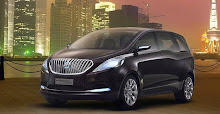The Volkswagen Eos range is expanded with the latest version of the Eos White Night, which is currently available for orders with price tags beginning at 33,140 Euros.

Specifically, the new Eos White Night comes in a strikingly contrast of black and white. The White Night boasts the exterior painted in "Candy White", a roof colored in "Deep Back Pearlescent" and cherry-red LED taillights. Additionally, the mirror covers, the radiator grille and the trim strips are covered in black as well. 18-inch “Budapest” wheels partially painted black with a polished finish complete the elegant appearance of the Eos White Night.
The white-dark contrast continues inside the car too, with the black nappa leather seats, door and side trim and black steering wheel keeping the same exterior styling cues. Furthermore, the trim strips and radio trim in "Candy White" plus the sill panel strips lettered with "White Night" are also a part of the range.
As with the features offered by the Volkswagen Eos White Night, it comes with a fairly decent equipment lineup, including "Climatronic" climate control system, sports chassis lowered 15 mm and heated front seats, all of them offered as standard.
Incidentally, the Eos White Night can be combined with all engine versions included in the Eos range, excepting the V6.


Specifically, the new Eos White Night comes in a strikingly contrast of black and white. The White Night boasts the exterior painted in "Candy White", a roof colored in "Deep Back Pearlescent" and cherry-red LED taillights. Additionally, the mirror covers, the radiator grille and the trim strips are covered in black as well. 18-inch “Budapest” wheels partially painted black with a polished finish complete the elegant appearance of the Eos White Night.
The white-dark contrast continues inside the car too, with the black nappa leather seats, door and side trim and black steering wheel keeping the same exterior styling cues. Furthermore, the trim strips and radio trim in "Candy White" plus the sill panel strips lettered with "White Night" are also a part of the range.
As with the features offered by the Volkswagen Eos White Night, it comes with a fairly decent equipment lineup, including "Climatronic" climate control system, sports chassis lowered 15 mm and heated front seats, all of them offered as standard.
Incidentally, the Eos White Night can be combined with all engine versions included in the Eos range, excepting the V6.











































